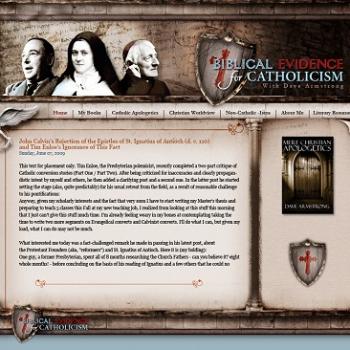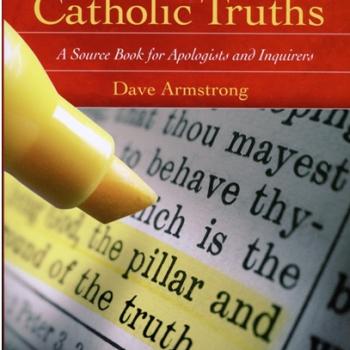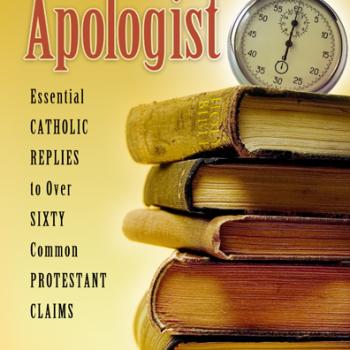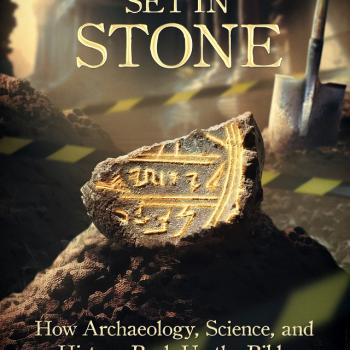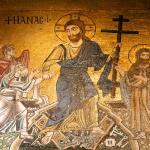+ Comparison with Other Authors
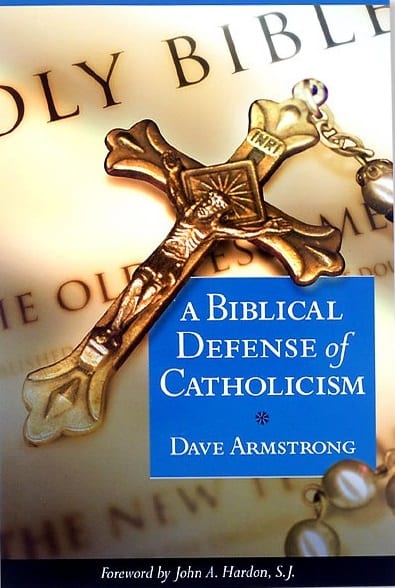
I ran across this tonight in my usual scanning of the Amazon lists of bestselling books. I’ve always said that my books (and writings in general) probably require a high school education to have the most impact on a reader.
Secondly, I’ve reiterated that I am trying to challenge and “stretch” readers to expand their horizons in the theological realm. I resist at every turn, calls for “dumbing down” or simplifying, because I think it is important to show people that religious matters can be mind-challenging and intellectually stimulating, rather than infantile speculations for the gullible, as is often charged by agnostics and atheists. The more we Christian writers “dumb down”, the more that false impression is fostered.
Thirdly, I have said that oftentimes I feel like I am writing in a “zone” that is somewhere between undergraduate college and academia. I think that I use probably an above average number of “big words” and that I tend towards longer sentences (actually, the latter is seen below to be not as much the case as I had thought).
My three books for Sophia [as of 2007; it is now six], all now have, by the way, the “Search Inside” capability, as listed on amazon:
A Biblical Defense of Catholicism (2003)
The Catholic Verses (2004)
The One-Minute Apologist (2007)
“Search Inside” for The Catholic Verses, however, has less features than for the other two books. I think the reason is because it was only recently added to the other two, and as Amazon has developed it, more (rather interesting and fun) things have been added. One of the cool new aspects of this search and “analysis” capacity is called “text stats.” I’ve never seen anything like it. First it offers three measuring criteria for “Readability” (my emphases):
The Readability calculations estimate how easy it is to read and understand the text of a book.
The Fog Index was developed by Robert Gunning. It indicates the number of years of formal education required to read and understand a passage of text.
The Flesch Index, developed in 1940 by Dr. Rudolph Flesch, is another indicator of reading ease. The score returned is based on a 100 point scale, with 100 being easiest to read. Scores between 90 and 100 are appropriate for 5th and 6th graders, while a college degree is considered necessary to understand text with a score between 0 and 30.
The Flesch-Kincaid Index is a refinement to the Flesch Index that tries to relate the score to a U.S. grade level. For example, text with a Flesch-Kincaid score of 10.1 would be considered suitable for someone with a 10th grade or higher reading level.
Then there is the “Complexity” criterion: percentage of “complex words” (three or more syllables), syllables per word, and words per sentence. Then, for both broad standards, one can compare a book with all other books, or other books narrowed down into more specific categories. So let’s see how my books rate:
A Biblical Defense of Catholicism:
| Readability | Compared with books in All Categories |
||||||
| Fog Index: | 14.1 |
|
|||||
| Flesch Index: | 51.9 |
|
|||||
| Flesch-Kincaid Index: | 10.9 |
|
|||||
| Complexity | |||||||
| Complex Words: | 16% |
|
|||||
| Syllables per Word: | 1.6 |
|
|||||
| Words per Sentence: | 19.8 |
|
|||||
It’s interesting that when one compares A Biblical Defense of Catholicism to others in the Catholic theology category, that it becomes (relatively) considerably easier to read. The first criterion then gives percentages of 36%, 34%, and 35%, and the second 43%, 40%, and 42%: quite statistically significant differences.
Here are the stats for The One-Minute Apologist:
| Readability | Compared with other books | ||||||
| Fog Index: | 12.9 |
|
|||||
| Flesch Index: | 54.4 |
|
|||||
| Flesch-Kincaid Index: | 10.1 |
|
|||||
| Complexity | |||||||
| Complex Words: | 14% |
|
|||||
| Syllables per Word: | 1.6 |
|
|||||
| Words per Sentence: | 17.9 |
|
|||||
All indications here are for a simpler book, which is to be expected, due to the summarizing, compact, Reader’s Digest nature of the book (two pages for each sub-topic). Only the syllables per word remained the same. The education levels required are what I would expect: two years of college for Biblical Defense (“BDC”) and one year of college for One-Minute Apologist (“OMA”): according to the fog index. But according to Flesch-Kincaid, only an eleventh-grade and tenth-grade education are required. If we average the two, it comes out to a half year of college for BDC and halfway through 12th grade for OMA.
And then averaging these averages for the two books (i.e., adding up the four measures and dividing by four), it comes out to exactly a high school education (12.0): precisely as I have said for years. I shall use this method to compare my books with others. Using the same averages for complexity, we arrive at the following “master readability index” for my (two) books:
Readability: 12.0 (high school education; roughly 54 percentile; a little bit above average for all books)
Complex Words (three + syllables): 15% (just about average for all books)
Syllables per Word: 1.6 (also just about average)
Words per Sentence: 18.85 (roughly 65 percentile: 35% of books have more)
Now let’s have a lot of fun and make some comparisons with other writers:
Scott Hahn (A Father Who Keeps His Promises + The Lamb’s Supper):
Readability: 11.95
Complex Words: 13%
Syllables per Word: 1.5
Words per Sentence: 20.6
So compared to Scott, my writings require one-twentieth of a year more education to properly understand, have 2% more complex words, have .1 more syllables per word average, but 1.75 less words per sentence average. This is fascinating, since Scott Hahn is a professor, and I have a BA in sociology with a minor in psychology and no formal theological education. I would say, then, that he is deliberately making his material simpler to read (which is, I think, very good for an academic to do, so he is not just writing to other scholars), and I am not trying to do that at all, making our two “readability” indices come out about the same.
I’m curious about Peter Kreeft, since he is a philosopher by trade, and one of my favorite apologists (Catholic Christianity + Fundamentals of the Faith):
Readability: 10.73
Complex Words: 13.5%
Syllables per Word: 1.5
Words per Sentence: 17.35
I find this very interesting also. Kreeft’s two books require about a year and a quarter less education than Scott’s and my books. His complex words are 1.5% less than mine and 0.5% more than Scott Hahn. He uses 1.5 less words per sentence than I do and 3.25 less than Scott. Clearly, again, he is simplifying, which is a good thing. When one is at the sublime level of intelligence and insight of a Hahn or a Kreeft, if one didn’t simplify, few would either understand or benefit.
How about a well-known and beloved historic apologist like G. K. Chesterton? He did not have a college education, so cannot technically be considered an academic. But he was an undeniably great thinker and writer (Orthodoxy + The Everlasting Man):
Readability: 12.9
Complex Words: 12.5%
Syllables per Word: 1.5
Words per Sentence: 23.05
What is most surprising to me here is the words per sentence figure. I think of Chesterton as a short sentence-writer. Yet for these two books (his most famous apologetics titles), he averages 4.2 more words per sentence than I do, and also surpasses Kreeft and Hahn. His readability requires a higher grade level, as I would suspect, since, according to my hypothesis, academics writing for the populace have to necessarily simplify their writing and expression.
Chesterton, being more like me in this regard (no theological degree) probably felt that he could write as he wished. Consequently, his works actually require more education by these criteria than those of the academics Kreeft and Hahn. He was also an exceedingly wise man, and that surely requires more complexity to convey in words. But, curiously, Chesterton uses fewer complex words. It’s funny how all three average 1.5 syllables per word, but my average is 1.6.
How about my favorite writer, the great Anglican apologist C. S. Lewis (Mere Christianity + Screwtape Letters)?
Readability: 11.47
Complex Words: 9.5%
Syllables per Word: 1.45
Words per Sentence: 22.25
Lewis is notable for considerably fewer complex words. I’m interested in seeing how different his stats are for a children’s book and also for one of his strictly academic books, written to fellow scholars (and both scarcely “apologetic” at all, as are the above two books). If we examine his famous children’s book (part of The Chronicles of Narnia), The Lion, the Witch, and the Wardrobe, we find exactly what we would expect of a children’s book:
Readability: 6.7
[Flesch Index was 79.2, so that it is as easy to read as 95% of all books]
Complex Words: 5%
Syllables per Word: 1.3
Words per Sentence: 14.4
We see that it is suitable for a child in seventh grade to read, with far fewer complex words, words per sentence, and even less average syllables per word. But if we take a look at his scholarly works, we see, of course, a huge difference in the other direction. I shall average the results from five such volumes: The Discarded Image, Studies in Medieval and Renaissance Literature, Studies in Words, An Experiment in Criticism, and A Preface to Paradise Lost:
Readability: 12.06
Complex Words: 14%
Syllables per Word: 1.58
Words per Sentence: 19.56
This is interesting in that even the scholarly works are accessible to those with a high school education. Probably, Lewis’ work as a popular lay apologist spilled over into his actual academic writing (which is a good thing, I think). He still uses 1 % less complex words than I do (I appear to be the king of three-syllable-plus words!).
That was fascinating. Now, I’d like to analyze John Henry Cardinal Newman‘s works, that are considered by many very “dense” and difficult to read (and, in my mind, known for very long , eloquent sentences): An Essay on the Development of Christian Doctrine (the edition used here also includes three other related works), Parochial and Plain Sermons (considered by some the finest sermons in the English language), Apologia pro vita sua (his spiritual autobiography), and The Idea of a University:
Readability: 13.79
Complex Words: 13.75%
Syllables per Word: 1.53
Words per Sentence: 24.78
Some individual differences in Newman’s writings are striking. Of these four titles, The Idea of a University was significantly less “readable”: a remarkable 17.45 average, or the middle of thee second year of graduate school (!!!). Development came in second, with 13.6 (middle of sophomore year in college), while the other two were about equal: 12.0, or high school education. Idea also had far more words per sentence than the average: 33.1. Development had the most complex words: 17% and Sermons the fewest: 10%, with the others in-between.
How would St. Thomas Aquinas rank, then? His writing is often synonymous in many people’s opinions, with difficult, dry-as-dust writing. Summa Theologica gives these statistics:
Readability: 9.7
Complex Words: 13%
Syllables per Word: 1.5
Words per Sentence: 15.1
This is most surprising. Less than a tenth grade education is required, and there are relatively fewer complex words and long sentences. So it seems that the great Doctor uses simple words to get his extraordinary ideas across. His thought processes, and how he argues and utilizes logic, however, are something else again, and cannot be measured by these criteria.
I’m curious about the eminent Protestant philosopher Alvin Plantinga. Some of his more well-known straight philosophical works are Warranted Christian Belief, God and Other Minds, The Nature of Necessity, and Warrant and Proper Function. Here are the average stats:
Readability: 14.7
Complex Words: 16.5%
Syllables per Word: 1.63
Words per Sentence: 24.35
This is as expected for a modern analytic philosopher. He’s the most difficult to read of anyone thus far: more than halfway through junior year of college, most complex words and syllables per word, and sentence length just slightly lower by average than the “long-winded” Cardinal Newman. Warrant and Proper Function is his most difficult book to read, with a 16.5 readability rating, 17% for complex words, 1.7 average, syllables per word, and 28.1 words per sentence.
A modern philosopher, Rene Descartes, shows very high numbers (Discourse on Method and Meditations on First Philosophy):
Readability: 18.95
Complex Words: 12.0%
Syllables per Word: 1.5
Words per Sentence: 39.4
Descartes (in this one work) has the highest readability level of anyone on my list (almost three years of graduate school), which is interesting because I read this in a first year of college introduction to philosophy course (12 years of school). The strange thing is that his “big words” are a low proportion. He also wins the highest words per sentence, hands down.
As an example, I was curious to look at a technical scientific work. How about The Elegant Universe, by physicist Brian Greene (that I happen to have in my own library)?:
Readability: 15.5
Complex Words: 18%
Syllables per Word: 1.7
Words per Sentence: 24.2
Not surprisingly, Greene breaks the record in the first three categories, with the readability rated at halfway through the senior year of college.
I’m curious about someone like John Calvin, who writes in a pretty “high” and (some would say) quite dry style. Here are the stats for his famous Institutes of the Christian Religion:
Readability: 10.2
Complex Words: 14%
Syllables per Word: 1.5
Words per Sentence: 15.9
Like St. Thomas Aquinas, I think the ratings here are surprising, in the more “readable” direction. But again, complete thoughts are not able to be measured, so that a writing may use relatively simpler words in the service of relatively more complex ideas. I think that is true of both Aquinas and Calvin.
As for Catholic theologians, it is said that Hans Urs von Balthasar makes for very difficult reading. I’ll do an average of his (Explorations in Theology: I. The Word Made Flesh, The Glory of the Lord: A Theological Aesthetics: III, and Elucidations):
Readability: 16.83
Complex Words: 15.33%
Syllables per Word: 1.57
Words per Sentence: 30.77
Balthasar’s Explorations in Theology, I comes in the highest level of readability: 18.25 years of education, or third year of graduate school! He also has the highest average for readability, by quite a margin (almost one year of graduate school), and the highest average for words per sentence, by far (remarkably, twice as much as both Aquinas and Calvin). So, yep, he is definitely difficult to read. No question, by these stats.
And of course we ought to include Pope Benedict XVI (The Spirit of the Liturgy, Introduction to Christianity, God is Near Us: The Eucharist: the Heart of Life, The Nature and Mission of Theology, Principles of Catholic Theology, and Truth and Tolerance):
Readability: 14.49
Complex Words: 16.17%
Syllables per Word: 1.62
Words per Sentence: 24.42
The Holy Father rates high in difficult readability (middle of third year of college), and has the highest percentage of three-syllable plus words of anyone except for philosopher Alvin Plantinga). He is also just o.o1 less average syllables per word than Plantingaand ranks fairly high in words per sentence.
Lastly, I’d like to see how my books compare in this regard with some of my fellow apologists. First, Patrick Madrid (Where is That in the Bible + Pope Fiction):
Readability: 12.93
Complex Words: 14%
Syllables per Word: 1.55
Words per Sentence: 22.1
Pat comes in high for readability: almost a year of college (and almost a year more than my average). He comes in slightly less than I do in the next two categories and with three words plus more per sentence, average, than my writing.
Karl Keating‘s three best selling books (Catholicism and Fundamentalism, What Catholics Really Believe, and The Usual Suspects), come out this way:
Readability: 11.85
Complex Words: 14.33%
Syllables per Word: 1.6
Words per Sentence: 18.93
This is quite close to my rating in all respects: the closest of anyone surveyed yet: just slightly lower in the first two categories, the same in the third, and slightly higher in the fourth.
How about Steve Ray (Crossing the Tiber and Upon This Rock)?
Readability: 13.18
Complex Words: 15.5%
Syllables per Word: 1.6
Words per Sentence: 21.6
Steve tops Pat Madrid in difficult readability, with a year in college and a bit more, uses slightly more “big words” than I do, and almost three more words per sentence.
Where does Jimmy Akin (The Salvation Controversy, Mass Confusion) come down on the spectrum?:
Readability: 14.78
Complex Words: 16%
Syllables per Word: 1.6
Words per Sentence: 25.35
Jimmy’s readability is high (third year of college), but part of that is accounted for, I think, by technical terms that would be necessary for his book on the Mass (which averaged 15.95, whereas his other book averaged 13.6). He also writes a lot of words per sentence than anyone thus far, even Cardinal Newman.
Mark Shea is an apologist who majored in English. I think that certainly makes for better writing, but does it lead to more complexity too? Well, let’s see, using his two bestselling books (By What Authority? and Making Senses Out of Scripture):
Readability: 13.7
Complex Words: 13.5%
Syllables per Word: 1.55
Words per Sentence: 24.5
Mark’s readability quotient comes in pretty high, while (curiously) his use of complex words comes in low, while words per sentence are very high. Perhaps English majors, then, like long, complex sentences (perhaps with more difficult syntax), while not necessarily using more “big words.”
Following this line of thought, I am particularly curious about Thomas Howard, an English professor who writes excellent, eloquent books about Catholicism (semi-apologetic in nature). I think of Howard as having a fabulous vocabulary. I shall average his books, Evangelical is Not Enough and On Being Catholic:
Readability: 11.75
Complex Words: 12.5%
Syllables per Word: 1.5
Words per Sentence: 20.6
This is a bit surprising. Howard requires less than a high school education (but then, I suppose, professors are used to simplifying in class), and has a low complexity rating. This means to me that, though he uses many words that I never heard before, he also must use a lot of simpler words overall.
My friend, Al Kresta, a great talk show host, wrote a book of apologetics entitled Why Are Catholics So Concerned About Sin? Here are its stats:
Readability: 13.35
Complex Words: 15%
Syllables per Word: 1.6
Words per Sentence: 22.1
Now, a comparison chart compiling all we have learned: each one from more complex (and longer sentences) to less complex:
Readability (years of education required):
Descartes (Discourse on Method . . .) 18.95
Balthasar, Explorations in Theology, I 18.25
Newman – Idea of a University 17.45
Balthasar (3) 16.83
Plantinga, Warrant & Proper Function 16.5
Brian Greene (physicist) 15.5
Jimmy Akin (2) 14.78
Alvin Plantinga (4) 14.7
Pope Benedict XVI (6) 14.49
Cardinal Newman (4) 13.79
Mark Shea (2) 13.7
Newman – Development 13.6
Al Kresta (1) 13.35
Steve Ray (2) 13.18
Patrick Madrid (2) 12.93
G.K. Chesterton (2) 12.9
C.S. Lewis (5 academic works) 12.06
Dave Armstrong (2) 12.0
Scott Hahn (2) 11.95
Karl Keating (3) 11.85
Thomas Howard (2) 11.75
C.S. Lewis (2 apologetics) 11.47
Peter Kreeft (2) 10.73
John Calvin (Institutes) 10.2
St. Thomas Aquinas (Summa Theologica) 9.7
C.S. Lewis, Lion, Witch & Wardrobe 6.7
Complex Words (3 or more syllables; percentage):
Pope Benedict XVI, The Nature and Mission of Theology 20%
Pope Benedict XVI, Principles of Catholic Theology 19%
Brian Greene (physicist) 18
Newman – Development 17
Plantinga, Warrant & Proper Function 17
Alvin Plantinga (4) 16.5
Pope Benedict XVI (6) 16.17
Jimmy Akin (2) 16
Steve Ray (2) 15.5
Balthasar (3) 15.33
Dave Armstrong (2) 15
Al Kresta (1) 15
Newman – Idea of a University 15
Karl Keating (3) 14.33
Patrick Madrid (2) 14
John Calvin (Institutes) 14
C.S. Lewis (5 academic works) 14
Cardinal Newman (4) 13.75
Peter Kreeft (2) 13.5
Mark Shea (2) 13.5
Scott Hahn (2) 13
St. Thomas Aquinas (Summa Theologica) 13
G.K. Chesterton (2) 12.5
Thomas Howard (2) 12.5
Descartes (Discourse on Method . . .) 12
C.S. Lewis (2 apologetics) 9.5
C.S. Lewis, Lion, Witch & Wardrobe 5
Words per Sentence:
Descartes (Discourse on Method . . .) 39.4
Balthasar, Elucidations 34.8
Newman, Idea of a University 33.1
Balthasar (3) 30.77
Plantinga, Warrant & Proper Function 28.1
Jimmy Akin (2) 25.35
Cardinal Newman (4) 24.78
Mark Shea (2) 24.5
Pope Benedict XVI (6) 24.42
Alvin Plantinga (4) 24.35
Brian Greene (physicist) 24.2
G.K. Chesterton (2) 23.05
C.S. Lewis (2 apologetics) 22.25
Patrick Madrid (2) 22.1
Al Kresta (1) 22.1
Newman, Development 21.7
Steve Ray (2) 21.6
Scottt Hahn (2) 20.6
Thomas Howard (2) 20.6
C.S. Lewis (5 academic works) 19.56
Karl Keating (3) 18.93
Dave Armstrong (2) 18.85
Peter Kreeft (2) 17.35
John Calvin (Institutes) 15.9
St. Thomas Aquinas (Summa Theologica) 15.1
C.S. Lewis, Lion, Witch & Wardrobe 14.4
Syllables per Word:
Alvin Plantinga (4) 1.63 (highest average)
Pope Benedict XVI (6) 1.62
Dave Armstrong (2) 1.6 (tied with Keating, Ray, Kresta, & Akin for highest average among apologists)
C.S. Lewis (2 apologetics) 1.45 (lowest average for non-children’s books)
C.S. Lewis, Lion, Witch & Wardrobe 1.3 (lowest average)
Readability (current-day Catholic apologists only):
Jimmy Akin (2) 14.78
Mark Shea (2) 13.7
Al Kresta (1) 13.35
Steve Ray (2) 13.18
Patrick Madrid (2) 12.93
Dave Armstrong (2) 12.0 [12.5 for Biblical Defense alone]
Scott Hahn (2) 11.95
Karl Keating (3) 11.85
Thomas Howard (2) 11.75
Peter Kreeft (2) 10.73
Complex Words (current-day Catholic apologists only):
Jimmy Akin (2) 16
Steve Ray (2) 15.5
Dave Armstrong (2) 15 [16 for Biblical Defense alone]
Al Kresta (1) 15
Karl Keating (3) 14.33
Patrick Madrid (2) 14
Peter Kreeft (2) 13.5
Mark Shea (2) 13.5
Scott Hahn (2) 13
Thomas Howard (2) 12.5
Words per Sentence (current-day Catholic apologists only):
Jimmy Akin (2) 25.35
Mark Shea (2) 24.5
Patrick Madrid (2) 22.1
Al Kresta (1) 22.1
Steve Ray (2) 21.6
Scottt Hahn (2) 20.6
Thomas Howard (2) 20.6
Karl Keating (3) 18.93
Dave Armstrong (2) 18.85 [19.8 for Biblical Defense alone]
Peter Kreeft (2) 17.35
*
I use big words: a lot of syllables per word average (tied for highest), and lots of three syllable plus words (surpassed only by Akin and Ray and tied with Al Kresta).
But I don’t use long sentences (less than everyone except for Peter Kreeft).
With the big words and shorter sentences, I’m about in the middle for “readability” — a high school education, as I have said for years; ironically, I placed above the three professors and Karl Keating, who has a degree in law, but lower than five strictly lay apologists (less formal education and none or far less in theology). Of the ten listed, only Scott Hahn actually has an advanced degree in theology (doctorate).
I have the most divergent ratio regarding lower level of education required (12 years) compared to the highest percentage of “big words” (15%). This, combined with the shorter sentences (ninth lowest of ten) makes my “profile” perhaps the most unique of all ten current apologists, producing a graph with great peaks and valleys (apart from possibly Mark Shea’s, which is similar in divergence but in a different fashion). That’s not to claim that my writing is “better”; only that it is different in its qualities in these respects from most of the others. Karl Keating’s “profile” is the most similar to mine, judging by all three categories.
Related to the above, most of the authors tend to be either high or low in all the categories, and to maintain a similarity across the three major categories (with the lowest numbers being more complex and lengthy):
Jimmy Akin 1-1-1
Mark Shea 2-8-2
Al Kresta 3-4-4
Steve Ray 4-2-5
Patrick Madrid 5-6-3
Dave Armstrong 6-3-9
Scott Hahn 7-9-6
Karl Keating 8-5-8
Thomas Howard 9-10-7
Peter Kreeft (2) 10-7-10
One might average these three figures for the “Master Complexity Quotient”:
Jimmy Akin 1.0
Al Kresta 3.67
Steve Ray 3.67
Mark Shea 4.0
Patrick Madrid 4.67
Dave Armstrong 6.0
Karl Keating 7.0
Scott Hahn 7.33
Thomas Howard 8.67
Peter Kreeft (2) 9
Ironically again, it is the three professors and lawyer who score lower for complexity and higher for readability, then myself, and then the “lay apologists”. I have interpreted this as meaning that academics are better acquainted with the effort to simplify one’s thoughts for the function of educating students. I don’t really try to do that (except deliberately in my latest book, The One-Minute Apologist and in The New Catholic Answer Bible, due to strict demands for brevity); the result being that I come out in the middle overall, compared to other apologists. That’s fine with me; I rather like that.
Jimmy Akin leads all four categories (i.e., more difficult and complex compared to others, at least judging by words alone).
Mark Shea‘s writing requires a high education (13.7 grade level) while using less complex words (13.5%), but Karl Keating requires less education (11.85 years) and uses bigger words (14.33%).
After Jimmy Akin‘s three 1’s, Al Kresta is most consistent across categories, followed by Pat Madrid and Thomas Howard (tied for second).
Style, rhetoric, argumentative technique, use of humor, sarcasm, hyperbole, polemics, analogy, exaggeration, logical points, use of citations, structure of sentences and chapters and books, and the like, are all factors not at all included in these analyses. How they could be measured is a fascinating question, and probably unanswerable, in the same way that people’s tastes in, e.g., classical music and its performances and recordings, can hardly be quantified by any measure that is objective across the board (which makes it all the more fun and challenging to discuss). Variety is definitely the spice of life, in apologetics, as in literature, generally-speaking, and the wider arena of all the academic fields and the arts.
I’m afraid I will likely continue to write as I have been writing: spontaneously. It cramps a writer, I think, if he is consciously having to check himself and say, “I can’t use big words,” etc. I am what I am, just like musical composers differ in style and complexity. Some folks will like the writing, others won’t. It will be over some heads, but not too many. The study here says my writing will be understood by those with a high school education, so not even one year of college is required. That’s what I’ve always thought and striven for, so I hit it right on the nose.
I’ve had some big-name critics (editor-types) say that my writing was too complex or not stylish enough or not to their own taste. But robust sales would suggest otherwise. :-)
***
(originally 5-26-07)
Photo credit: published by Sophia Institute Press in 2003. See book and purchase information.








